
Potash-Lower Colorado River Scenic Byway
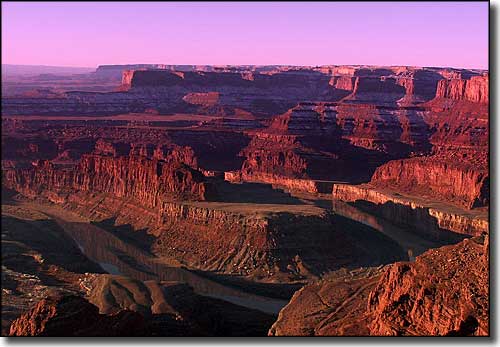
Looking down on the Potash-Lower Colorado River Scenic Byway from Dead Horse Point State Park
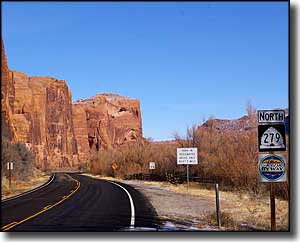
Utah Highway 279 is the Potash-Lower Colorado River Scenic Byway. This 17-mile route runs downstream along the Colorado River from just north of Moab. Along the way are several panels of prehistoric Native American petroglyphs with many individual carvings of animals and anthropomorphs. There is also a display of dinosaur tracks beside the road and three natural stone arches (Corona Arch, Bow Tie Arch and Jug Handle Arch). The scenic byway itself ends at the end of the pavement but the 4WD Potash Road and 4WD Long Canyon Road both continue into the backcountry and eventually connect to roads in Dead Horse Point State Park and the Island in the Sky section of Canyonlands National Park.
The road was built in 1963 to service the Texas Gulf Sulphur Company potash mine and plant that was being built at Cane Creek. A spur line of the Denver and Rio Grande Railroad was built at the same time to the same place. While the highway stayed along the side of the serpentine river, the train tracks pass through a 1.59-mile tunnel through the rock. Shortly after the road was opened to traffic in 1963, it was designated one of the most beautiful highways in America.
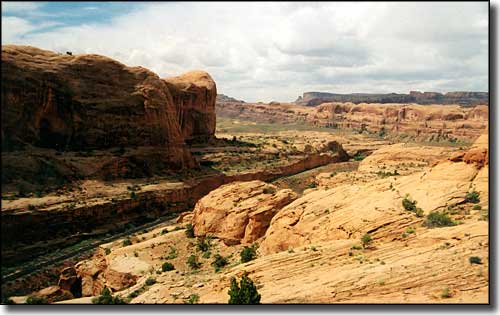
Bootlegger Canyon, up the Corona Arch Trail
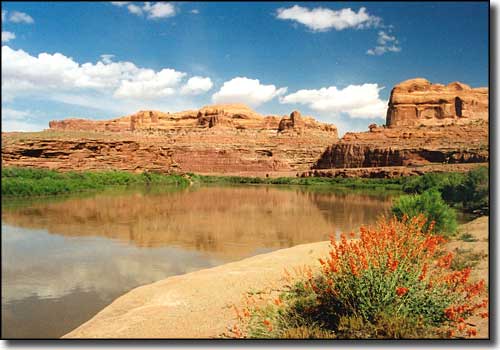
The Colorado River below Gold Bar Campground on the Potash-Lower Colorado River Scenic Byway
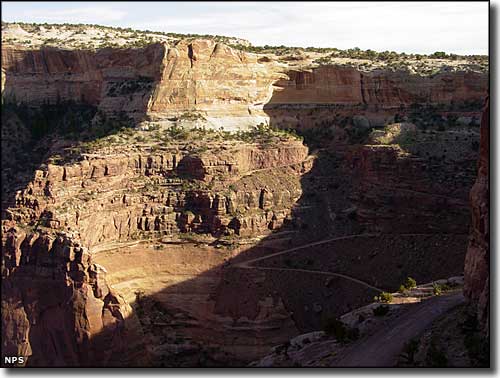
The Shafer Trail, a 4WD connector between Potash-Lower Colorado River Scenic Byway and Dead Horse Mesa Scenic Byway

Potash-Lower Colorado River Scenic Byway area map
